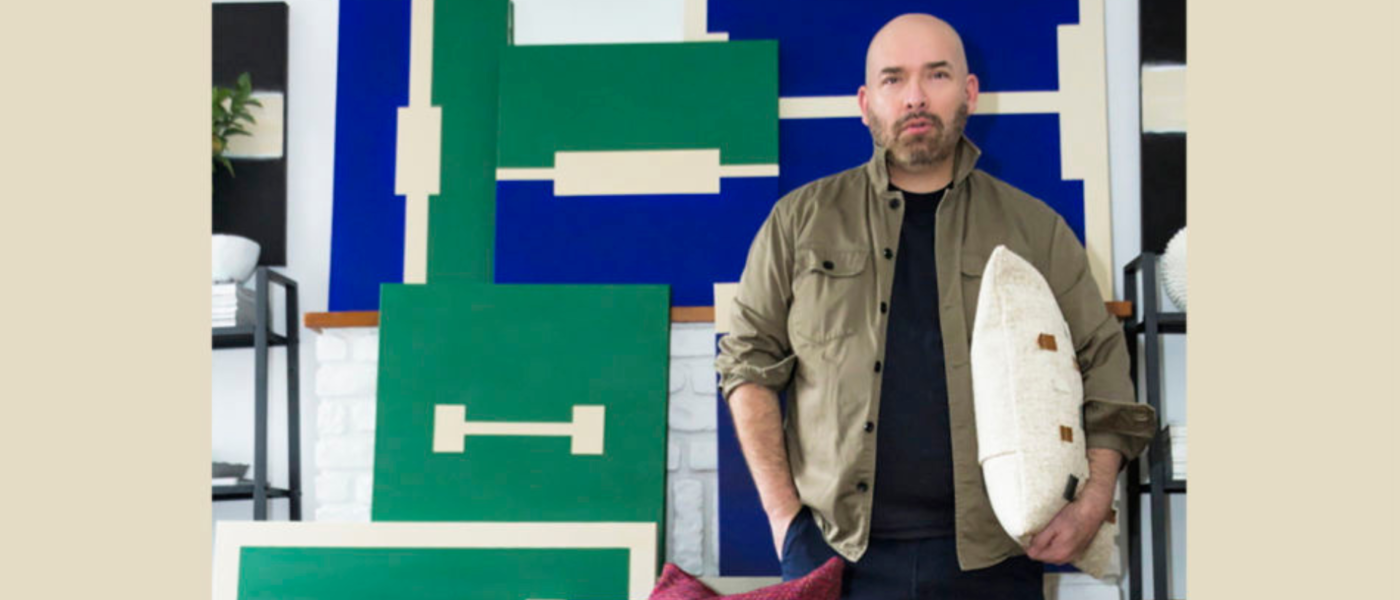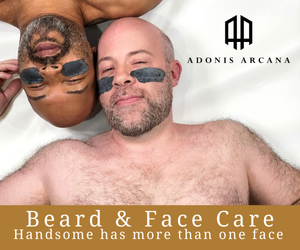A chat with artist and designer Peter Valcarcel
Out artist and designer Peter Valcarcel shares his expertise on why design matters more now than ever and why it’s best to keep it simple.
With the pandemic forcing us to spend much more time at home, we may have become more acutely aware of the importance of interior design, our at-home environment, and its impact on our moods and mental and emotional wellbeing.
But Peter Valcarcel has been attuned to that his whole professional life, working in art direction, visual merchandising and interior design for the past 20 years.
He is also an artist with his own artworks, plus rugs, wallpaper, ceramics, and everyday objects, accessories and accent pieces he has designed with his unique approach to color and form—these he has collated under the label EVERYDAY and his concept of pairing the striking with the simple is embodied quite clearly in his line of unique throw cushions. The hallmarks of Valcarcel’s signature style are monochromatic and neutral tones paired with classic modernist abstract shapes and patterns, but always with the reminder that for an object to take up home space, it should bring something into that space that is useful in function, form or feeling.

To find out more about Valcarcel’s design philosophy, he took time out from his hectic New York schedule for a chat with us.
I’m sure you’re aware of the stereotype about gay men in particular having an innate interest in interior design and in aesthetics. What is the substance behind this stereotype?
Peter Valcarcel: I have often asked myself that question, you know, would I still be an artist if I wasn’t gay? Would I still be designing rugs, wallpaper and ceramics if I were a straight married man? You know, I would be, because I don’t think that has to do with me being gay. I mean, the approach that I take to it obviously has tremendously to do with who I am, which is a part of it. But I think the desire to be an artist has no sexual identity or sexuality. But I do think that it’s a valid question, absolutely, because you’re thinking: Am I conforming myself to the norm. Am I really interested in this field?
For the every-person, do you think the pandemic has made us more sensitive to the importance of design and the elements and objects we bring into our homes — in terms of both art and interior design?
Peter Valcarcel: I have worked as an interior designer for years, but I am no longer an interior designer. I do two things: I’m a painter and some of that work has been translated into wallpaper and rugs. For that I am also a product designer. To answer your question, yes, we are a group of people that—and I don’t think this just applies to gay people—we like to consume, we like to spend, we like new shiny things, and we’ve been home for so long looking at the same things. At the same time, when we are home more, we start looking at the cracks of our design or how we live. When I worked as an interior designer, and now as a product designer, I don’t think only in terms of making things pretty; but also functional. And so when you’re looking at a space that doesn’t function properly you’re trying to figure out also, what else can I do to make this space function better? In the past we didn’t have the opportunity to stay home that long to think about it, especially people who live in cities, and who have smaller places. I think that you have seen a tremendous amount of people trying to buy all sorts of things to make their home better and to work from home.
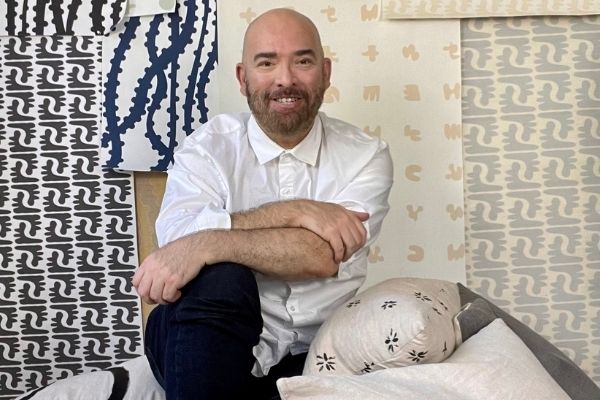
What advice can you give people who don’t speak the language of aesthetics? For example, I notice with your own product designs you use simple forms and monochromatic tones and colors. How do we become better at developing a sense about the visual components in our life?
Peter Valcarcel: You don’t become better because there are people who work at that, the professionals, that is their job to do that, to be able to give you that skill. What you do is, you define what your aesthetic is and what your needs are. And once you have that down, then it’s a lot easier to pick things that you really, need. If you don’t give a space a specific function; if you don’t know what you’re going to do in this room, then you don’t know what you’re going to put in the room. I think it’s extremely basic to say this room is for this. In order to achieve this, I must buy this kind of thing. Sometimes I think people get overwhelmed: I’ve got to get a rug, a curtain, a sofa, a chair—but they never think about what is it I am going to do in this room? When I approach interior design and product design and even art—there is beauty in everything we choose because we want things to be harmonic. But there is also function. There is function in art because it’s it’s inspiring, because it makes you happy, because it makes you smile. It makes you think about certain things. It reminds you of something. And that is the function.
Beautiful. Now, you mentioned you were a painter as well. What inspires you?
Peter Valcarcel: I went to painting from interior design because that’s what I went to school for. For many, many years when I went to school, I was told that in order to be a good and to a good painter or a good artist, you have to have something to say. And for many years I didn’t feel I had much to say. I couldn’t figure out what story to tell. And then later on in life, just by meeting people, I decided that the story that I’m trying to tell, it’s not the same story that you’re going to create or receive or perceive when you’re looking at my art. And so why don’t I just create things that I find interesting, pleasing to the eye, things that make me happy, and things that make me smile, because eventually I feel that that will trigger something in you. And that should be what I want to say.
That’s so interesting.
Peter Valcarcel: Obviously there are things that are beautiful, they have a very concise and very clear message. But there’s also art that makes you stop, that makes you look, that makes you smile, that makes you think about a very minor, but important state.
It’s like looking at a piece and being asked, Oh, why are you looking at this thing? It’s because I like it. And that should be sufficient: to appreciate art. Yes, you can go deeper. It could be more meaningful. You can talk to the artist, talk about the process, and why and where and all that. But if you like it, then that’s enough.
Now, when it comes to your own home and your immediate surroundings, even thinking as a minimalist here, is there one thing in your home, one object that you cannot live without?
Peter Valcarcel: Oh, many things. I love all my books. I have tons of books. A lot of my paintings mark a moment in my life. And so those are very important to me. They’re like memories. I also have some ceramics that I’ve done that I love. And they very meaningful for me. I have a ceramic piece that is called “The Wall” and it’s this sort of curved wall that has dots, little balls, and each dot represents a thought or a moment, whether it was good or bad. That has a lot of meaning to me in concept: how life happens and how you must remain, when possible, open to life.
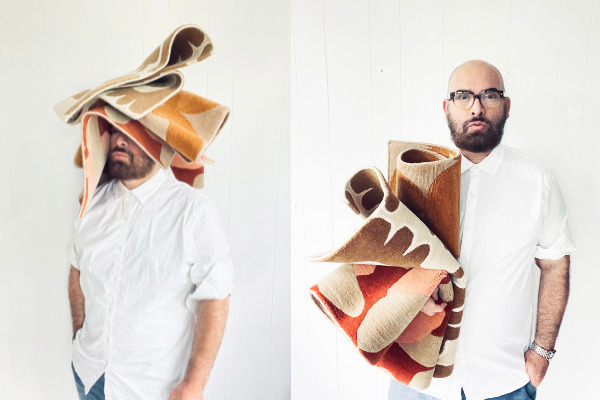
What is appealing about ceramics for you as an artist?
Peter Valcarcel: I think for me it is because it’s handmade and there’s nothing more beautiful about something that took time to make with your own hands. I think that something that was touched by someone and has the imprint of their hands and fingers—I think that’s wonderful. And that’s what makes it timeless.
Now you live in New York. What are your favorite art or design spots in the city?
Peter Valcarcel: I think for me, MoMA and the Metropolitan Museum of Art are the best two places to go. And social media is so big in this day and age, so for me, Instagram is a fantastic source of not only ideas, but triggers for ideas. I follow not only the museums, but I follow a few artists and that’s what keeps me motivated. I think you have to see other people’s work. I remember going to a studio for ceramics and looking at what other people were doing. And that’s just incredible to me. You know, the beauty, the time, the way they touch the pieces, you know, that is just inspiring, I think, to look at other artists and to see what they’re doing.
Follow Peter Valcarcel on Instagram here.
This article was originally published on our sister site, Queer Forty, and was written by Merryn Johns.
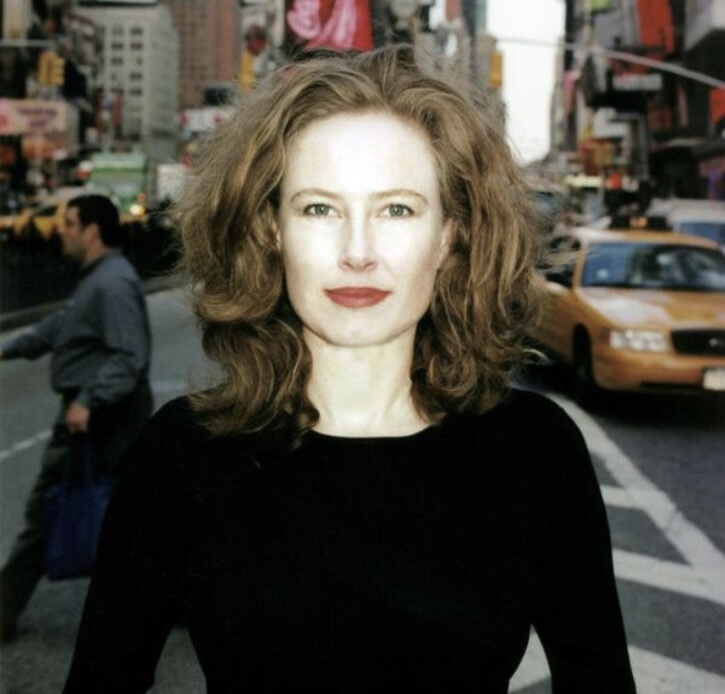
Merryn Johns
Merryn Johns is the Editor in Chief of Queer Forty. She is an award-winning journalist and public speaker. Originally from Sydney, Australia she has been based in New York City for 15 years, editing and writing for a variety of publications.

